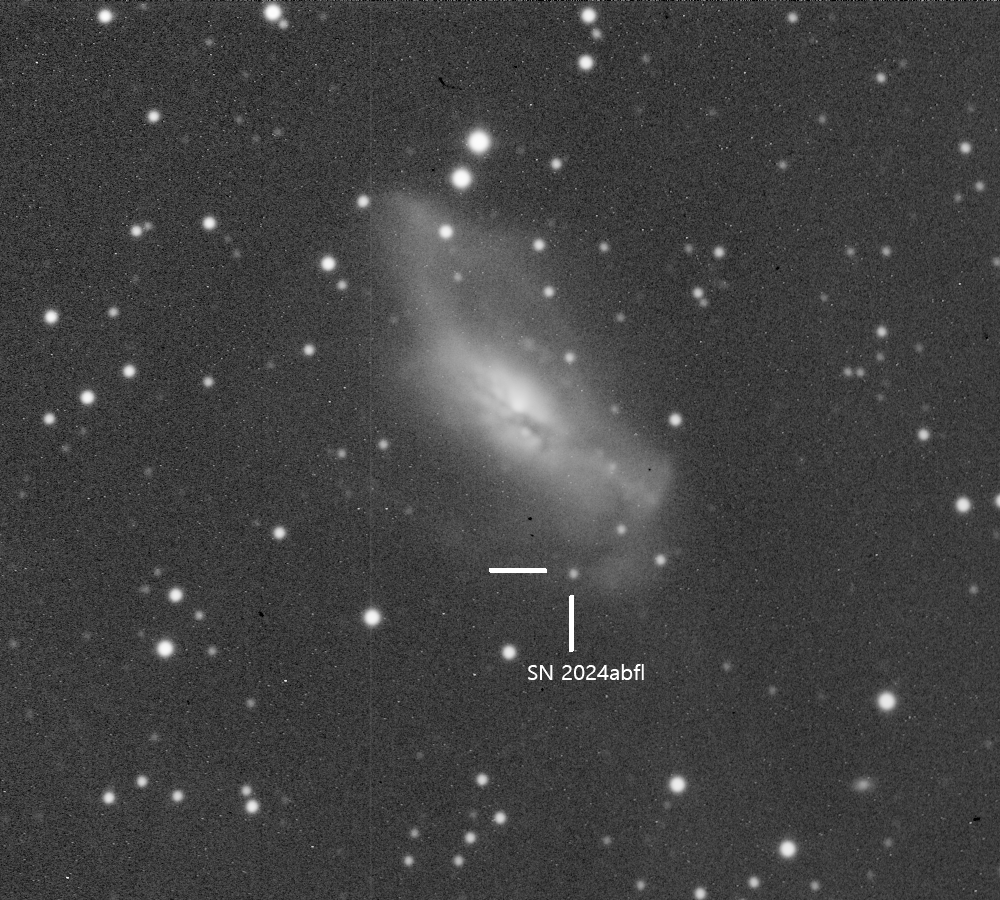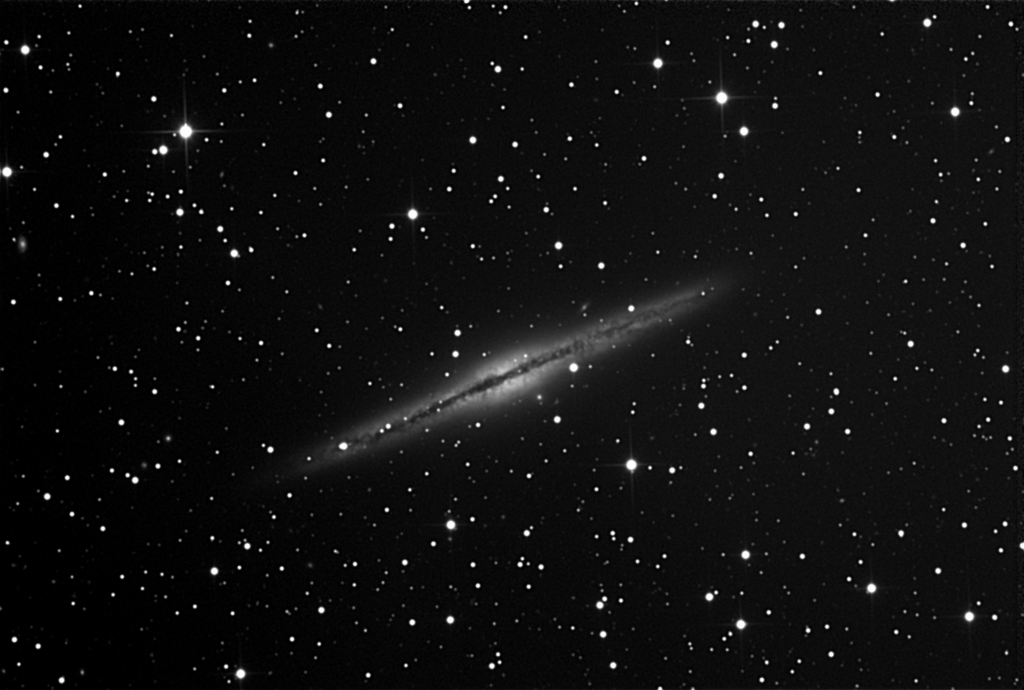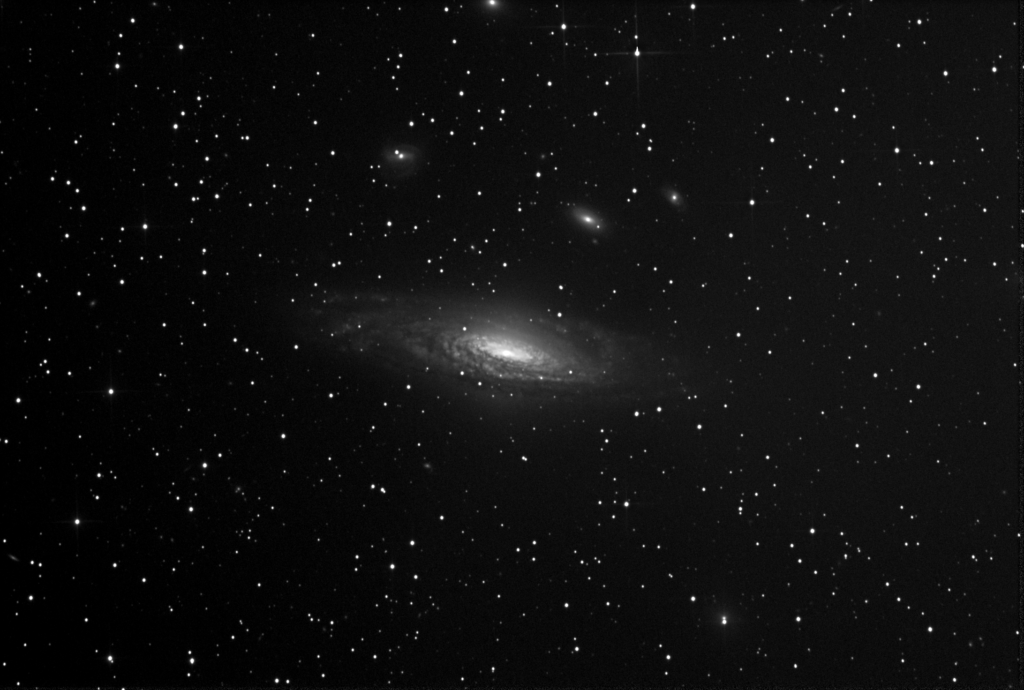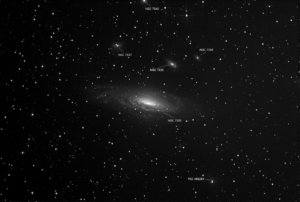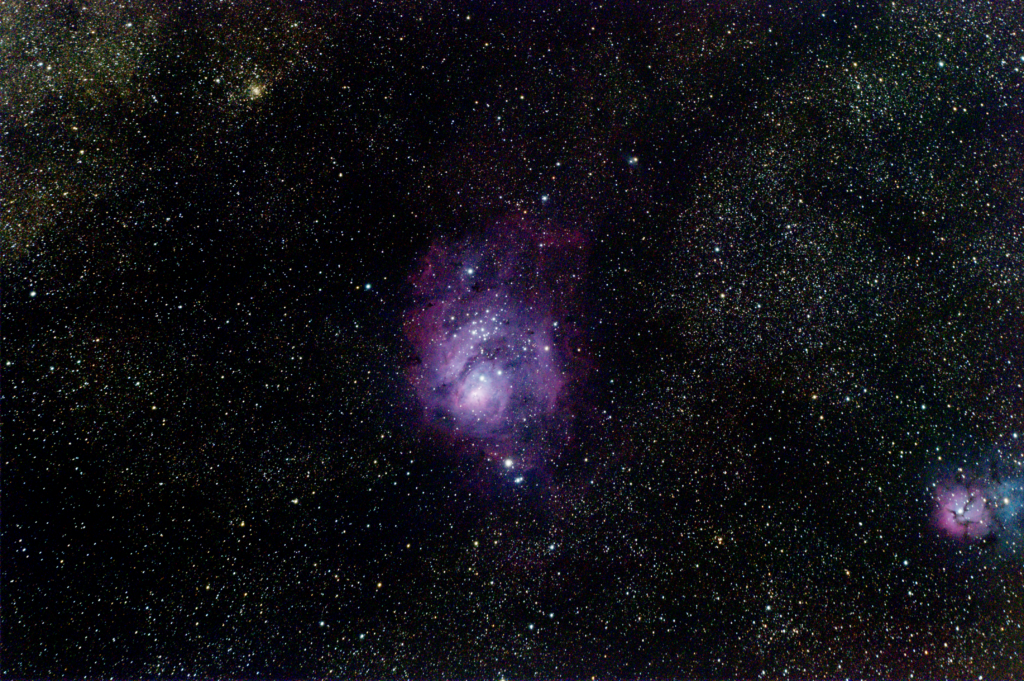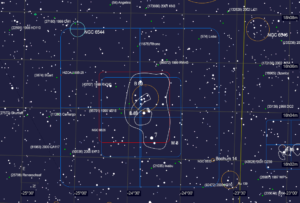Supernova SN 2024abfl was discovered by Koichi Itagaki on the 15th of November 2024. It is associated with galaxy NGC 2164. The initial magnitude was measured to be 17.5 and has been spectroscopically identified as a type 2 supernova. All the other stars in the image are in the Milky Way. NGC 2146 is located in the northern constellation of Camelopardalis (giraffe).
While waiting for my deep space camera to be repaired, I’ve been busying myself with two alternate efforts. One, planetary imaging since Saturn, Jupiter and Mars are in the morning sky. Second, developing the process of using a smaller telescope and a new, to me, deep sky camera. The second effort is the subject of this post.
I’ve always wanted the ability to image larger portions of the sky without resorting to mosaicking smaller images into one larger image. My normal deep sky setup’s FOV is only 24′ (arc minutes) by 16′. This is great for asteroid astrometry but a real pain to get something as large as the Pleiades (M 45) for example.
I have a wide FOV short tube 80mm f/6.0 apochromatic refractor. Paired with a 20-year-old STL-11000M CCD camera, I can now get a 4.3° x 2.8° FOV. So, I am, since I have the time, developing the procedures I need to use this imaging system effectively. Here is one of my first attempts.
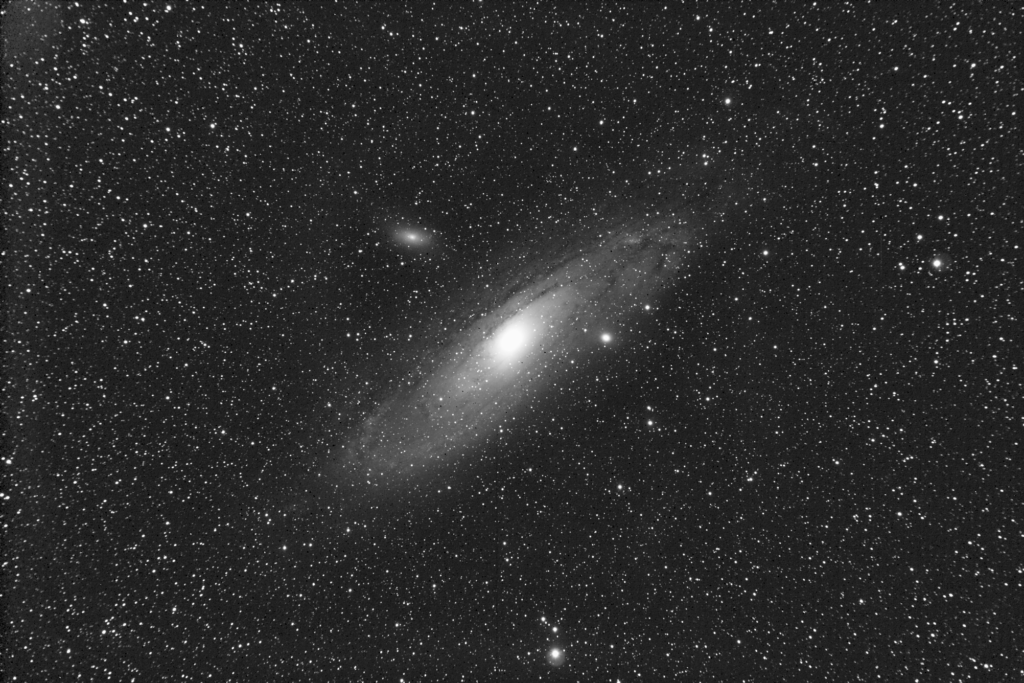
M 31 (The Great Andromeda Galaxy) [L: 30x60s] (Mouse over for labels)
This is of course, M 31 – a large spiral galaxy located in the Andromeda constellation. Located 2.5 million light years away, this is the furthest object that can be seen naked eye. You need a clear dark night, but even I have seen the bright core of this galaxy.
Mousing over the image will show labels for several objects associated with M 31. M 32 and M 110 are small satellite galaxies. These are gravitationally bound to M 31 in the same way the large and small Magellanic Clouds are gravitationally bound to the Milky Way. NGC 206 is a large star cloud and is one of the largest and brightest star forming regions in the nearby group of galaxies which includes the Milky Way.
I took a break from planetary imaging last night. This is a target of opportunity I ran across in between asteroid sets. NGC 891 is an edge-on spiral galaxy located in the constellation Andromeda. Also known as the Silver Sliver Galaxy, it was discovered by William Herschel in 1784.
There is quite a bit of detail in the prominent dust lane that evenly splits the disk. There is also another edge-on spiral galaxy apparently deep in the background slightly above NGC 891’s disk. It is very small and about half way from the central bulge and the right edge.
While waiting for an asteroid to come into view, I had enough time to image a target of opportunity. NGC 7331 is a large spiral galaxy located in the constellation Pegasus. As is normally the case, there are several other galaxies visible as well. Just starting to become visible in this image assembled from thirty-one 60 second exposures are three other members of the “NGC 7331 group” (NGC 7337/7335/7336). Although visually close, all the galaxies lie extremely far from each other and only look close from Earth’s perspective.
In the constellation map, NGC 7331 lies at the ‘top’ of Pegasus bordering on the constellation Lacerta (the Lizard).
I am still developing the procedures necessary to process one shot color (OSC) camera images. This is the first D90 image I have processed using the color information. The steps to process an OSC camera are totally different than the steps I use to produce color images taken by my science camera. The larger FOV also adds additional complexity. This image is 2.83° wide versus my science camera having an FOV of only 24′ (arc minutes). However, the increased area makes it much easier to image multiple objects without having to assemble a mosaic of smaller images.
This picture is centered on an object in the southern constellation Sagittarius: The Lagoon Nebula. Also known as M 8, it is a large emission nebula being energized by the open star cluster NGC 6530 that lies in it. Also easily visible towards the lower right is M 20 (The Trifid Nebula) containing both emission and reflection nebulae. The small concentration of stars at the upper left is the globular cluster NGC 6544.
 Chart courtesy of IAU/Sky&Telescope |
The vertical yellow line that runs all the way through the CdC chart is the ecliptic. Since most asteroids orbit in the plane of the solar system, the image contains a lot of them. I counted 31 identified on the chart by small green dots, but due to the image scale and the asteroid’s magnitudes I couldn’t find any of them.
Both M 8 and M 20 are just visible with binoculars. Using the constellation chart, observe just above the spout of Sagittarius’ Tea Pot asterism (heavy green lines).
